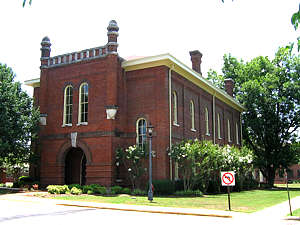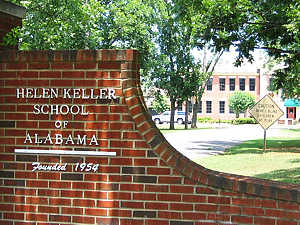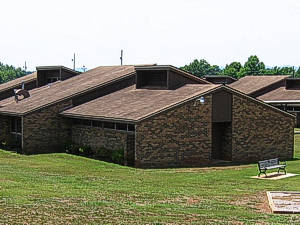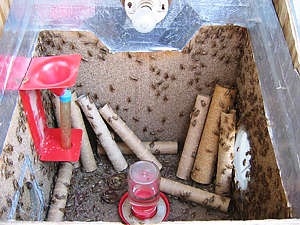Hi y'all! I'll practice 'bama talk this month, tryin' ta use sayings like Ah herd thaat (I heard that) and Ah don’t thank so (I don’t think so) to tell a few thangs (things) on the saad (side) about this lesser known heartland of American Child and Youth Care.

Original entrance to Alabama Institute for Deaf & Blind, Established 1858
While many would have heard about the Walker School in Boston, Boys' and Girls' Towns in Kansas, and the Hershey Foundation in Pennsylvania, I think very few will have learned about Child and Youth Care practices in Talladega since 1858. There the Alabama Institute for Deaf and Blind was established. Their website at (www.aidb.org) claims it to be “the world's most comprehensive education and rehabilitation system serving children and adults who are deaf, blind and multi-disabled.” In 1865, Talladega College was established by freed slaves who wanted to educate their children in residential school buildings constructed with slave labor for white students that post-American Civil War became the home of Alabama’s first college dedicated to servicing the educational needs of blacks (www.talladega.edu).

Original young peoples' residence at the Alabama Institute for Deaf & Blind
Remember learning about Helen Keller, that native daughter of northern Alabama who at the age of 19 months contracted “an acute congestion of the stomach and the brain” (scarlet fever or meningitis) that left her deaf and blind, and with a severe speech impediment? The Child and Youth Care story with this amazing woman was told in the 1962 film The Miracle Worker that won academy awards for Best Actress (Anne Bancroft) and Best Supporting Actress (Patty Duke). In 1904 at the age of 24, Helen graduated from Radcliffe College magna cum laude, becoming the first deaf and blind person to graduate from a US college. Helen Keller went on to become a world-famous speaker and author, advocate for the handicapped, and a very active member of the international socialist party at a time when that was unfashionable.

The New Helen Keller School for the Blind, founded 1954
Whilst wandering around these two campuses, I kept thinking about how group living arrangements at the institution established in 1858 were quite different from those built more than a hundred years later at the new Helen Keller School. Children and young people with sight and auditory challenges lived in both residential facilities. But think of how the smaller cottage-based residences offer so many more options for personalised work with kids – where everyone lives and works on the one level.

Newer cottage-style residences at Helen Keller School for the Blind
The Alabama Institute for Deaf and Blind claims to be – a comprehensive education and rehabilitation system – offering well-developed pathways for deaf and blind children to pursue education, whether traditional college and university degree options, or hands-on vocational training and certification. Elsewhere in the US such services are provided by different suppliers creating different service choices for clients. In this rural region of northern-eastern Alabama, multiple pathways have been created for families with children who are deaf and blind all provided through the same agency. Helen Keller would be smiling at how services for deaf and blind children in Alabama are actually more “socialist” than most other American services.

A roadside cricket store confirmed an active local interest in fishing